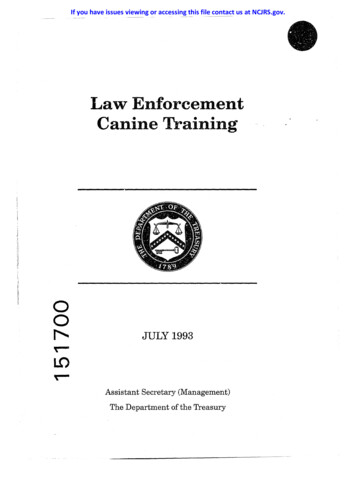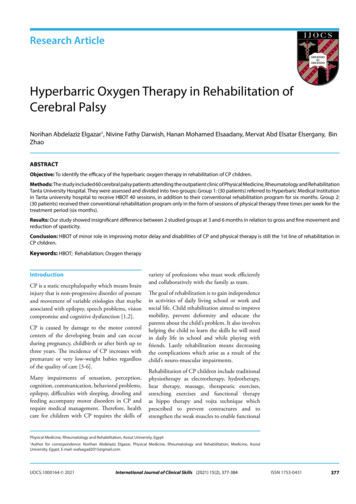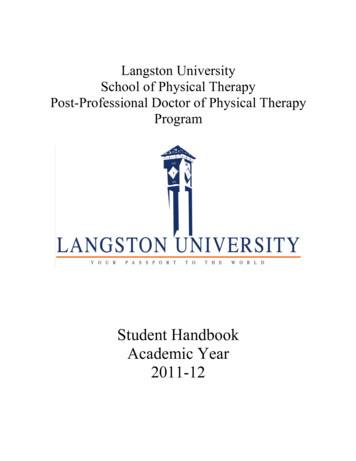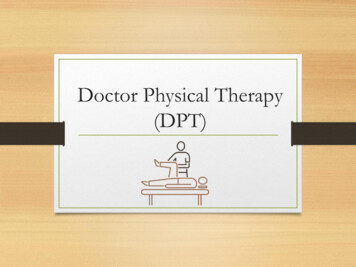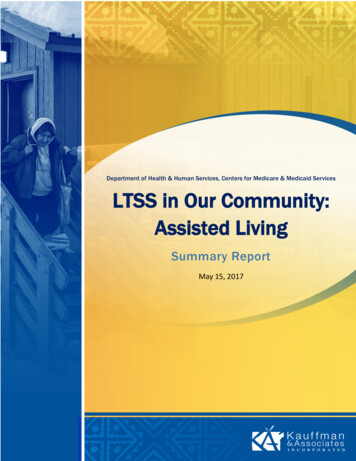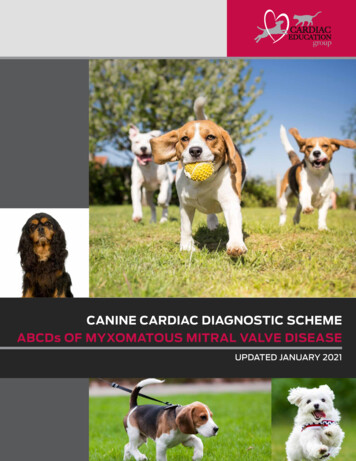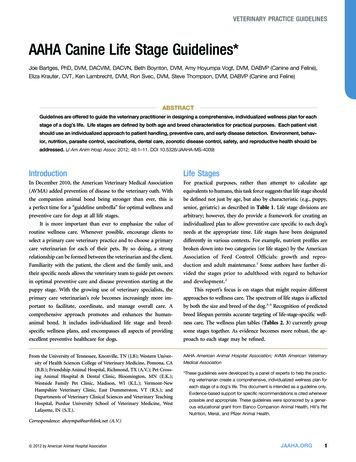
Transcription
Canine-Assisted Physical TherapyCaitlin Buening, PT, DPT, ATPDevin Buehler, PT, DPTMercy-Springfield
Topics Services provided by dogs Training of assistance dogs Process for facility dog placement Use of assistance dogs in rehabilitation Evidence-based recommendations
Service DogsA variety of services are provided byspecially trained canines including: Skilled companion/assistance dogs Hearing dogs Guide dogs Medical alert dogs Rescue dogs Drug detection dogs Facility dogs Therapy dogs
Assistance Dog ProgramsCanine Companions for IndependenceSupport DogsC.H.A.M.P. Assistance Dogs, Inc.Assistance Dogs of AmericaPaws for a CauseAND MANY MORE
Breeding & TrainingVOLUNTEER PUPPY RAISERSTIMEFRAMESCANINEBREEDSCOSTSPRISON BASED PROGRAMS
Application & MatchingApplication processCanine and human companion matching
Placement OptionsIndividualplacementsFacility placementsvs.
Assistance Dog Skills
Canine-Assisted TherapyDefinition: a goal-directedintervention in which an animal,meeting specific criteria, is an integralpart of the treatment process (AmericanVeterinary Medical Association)
How can this apply to PT? Pain Management Mobility Training Balance Activity Tolerance Motivation/Behavioral Modification Improved Patient Satisfaction Improved Outcomes
Is this evidence-based practice? Total Joint Arthroplasty (Harper, et al) Pain Ratings – difference of 2.4 units on VAS Higher HCAHPS scores – pain management, overall hospital rating,Cardiac Rehabilitation Improved willingness to walk Greater distance walkedPhysiological changes Increased beta-endorphins, oxytocin, prolactin, dopamine in both dogs and humans Decreased cortisol in humans Decreased blood pressure in both dogs and humansChronic pain Reduction in pain and emotional distress Improve feelings of well-being
Not Just for PT Occupational Therapy Functional Speech Therapy activities based on patient goalsADL trainingIADL trainingWord FindingSpeech ConfidenceGroup activitiesSocial interactionFUN!
Example Activities Hair brushing to work on grip strength/activity toleranceOpening and closing fasteners to address fine motorGait training emphasizing distance/activity tolerance,maintaining gait pattern with distractionPlaying ball to work on UE ROM and graspPlaying retrieve/tug to work on UE strength or balanceSimulating daily canine care by following schedule for tasksrelated to the dogsSimply petting the dog for lower level patients working oninitiation, reaching, and basic stimulationGait training with dog on hemiparetic/neglected sideAND MORE!
Logistics Documentation Billing Infection Prevention Employer policies Handlers but are the dogs happy?
Questions?
References Angela Phung - Colleen Joyce - Shirley Ambutas - Melissa Browning - Louis Fogg Beth-Anne Christopher - Suzanne Flood - Nursing – 2017 Carl M.Harper - Yan Dong - Thomas S.Thornhill - John Wright - John Ready Gregory W.Brick - George Dyer - Clinical Orthopaedics and Related Research 2014 Dawn A.Marcus - Cheryl D.Bernstein - Janet M.Constantin - Frank A.Kunkel - PaulaBreuer - Raymond B.Hanlon - Pain Medicine - 2012 J.s.j Odendaal - R.a Meintjes - The Veterinary Journal - 2003 Nancy L.Novotny - Jackie Deibner - Cheryl Herrmann - Journal of NursingEducation and Practice - 2015 Rondeau L; Corriveau H; Bier N; Camden C; Champagne N; Dion C;NeuroRehabilitation, 2010 Stephanie Burres - Nancy E.Edwards - Alan M.Beck - Elizabeth Richards Rehabilitation Nursing - 2016
Example Activities Hair brushing to work on grip strength/activity tolerance Opening and closing fasteners to address fine motor Gait training emphasizing distance/activity tolerance, maintaining gait pattern with distraction Playing ball to work on UE ROM and grasp Playing retrieve/tug to work on UE strength or balance Simulating daily canine care by following schedule for tasks



